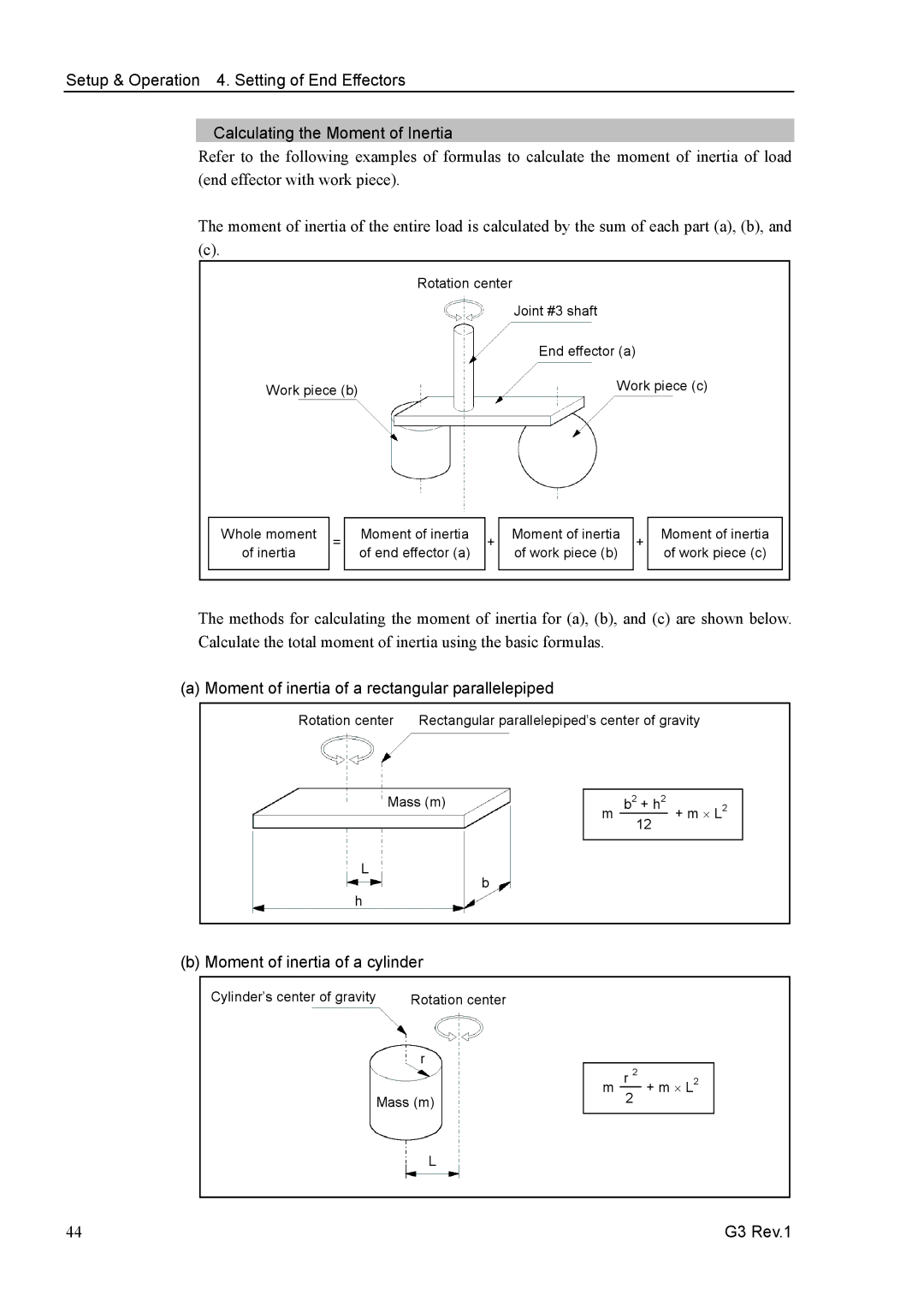
Setup & Operation 4. Setting of End Effectors
Calculating the Moment of Inertia
Refer to the following examples of formulas to calculate the moment of inertia of load (end effector with work piece).
The moment of inertia of the entire load is calculated by the sum of each part (a), (b), and
(c).
Rotation center
|
|
|
|
| Joint #3 shaft |
|
| |
|
|
|
|
| End effector (a) |
|
| |
Work piece (b) |
|
| Work piece (c) | |||||
|
|
|
|
|
|
|
|
|
Whole moment | = |
| Moment of inertia | + | Moment of inertia |
| + | Moment of inertia |
of inertia |
| of end effector (a) | of work piece (b) |
| of work piece (c) | |||
|
|
|
|
| ||||
|
|
|
|
|
|
|
|
|
The methods for calculating the moment of inertia for (a), (b), and (c) are shown below. Calculate the total moment of inertia using the basic formulas.
(a) Moment of inertia of a rectangular parallelepiped
Rotation center | Rectangular parallelepiped’s center of gravity |
Mass (m)
L
b
h
mb2 + h2 + m ⋅ L2 12
(b) Moment of inertia of a cylinder
Cylinder’s center of gravity | Rotation center |
r
Mass (m)
mr 2 + m ⋅ L2 2
L
44 | G3 Rev.1 |
